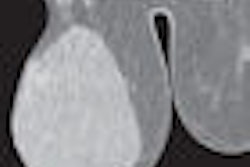
NEW YORK (Reuters Health), Jun 20 - Intraluminal high-intensity ultrasound appears to be an effective treatment for esophageal tumors, which are usually not amenable to curative resection, and can even achieve complete tumor necrosis, according to French researchers who are the first to use this approach in a small pilot study. Their findings were published online on June 5 by the Journal of Translational Medicine.
A series of four esophageal cancer patients treated with this method recovered uneventfully and received rapid and significant relief from dysphagia.
High-intensity ultrasound can induce rapid, complete, and well-controlled coagulation necrosis. Following successful in vivo trials using pig esophagi, Dr. David Melodelima of the French National Institute for Health and Medical Research (INSERM) at the University of Lyon and associates conducted the pilot study between September 2002 and November 2004.
All patients had histologically confirmed cancer of the esophagus that was considered inoperable. The research team was able to work with only this small cohort of patients because a three-month follow-up, to evaluate possible short-term complications, was completed on each patient before the next was recruited, Melodelima told Reuters Health.
The researchers used a rotating transesophageal applicator that featured both a therapeutic transducer and an ultrasound imaging probe. After the applicator was inserted under fluoroscopic guidance and its position verified by the ultrasound imaging probe, the acoustic intensity of the therapeutic transducer was adjusted according to the tumor's thickness.
After each 10-second exposure, the applicator was rotated as necessary, in 18-degree increments, then moved longitudinally to create overlapping treatment rings for the entire length of the stricture. The duration of the procedure ranged from 20 to 51 minutes.
Follow-up included esophagoscopy with biopsies performed eight days, one month, and three months after ultrasound therapy. Dysphagia improved significantly within 15 days in all patients and three were able to resume a solid diet.
Endoscopy of one patient 10 days after treatment showed complete necrosis of a proximal tumor and 90% necrosis of a distal tumor, although dysphagia recurred three months after treatment.
The researchers noted that "ultrasound ablation induces a progressive necrosis which allows enough time for inflammation and sclerosis to develop and form an inflammatory barrier against sepsis."
"The possibility to exactly tailor the tissue destruction to the tumor extent visualized by endoscopic ultrasound," Melodelima said, "makes this technique particularly appropriate for esophageal cancers."
By Scott Baltic
J Transl Med 2008;6:28.
Last Updated: 2008-06-19 17:17:51 -0400 (Reuters Health)
Related Reading
Focused ultrasound shows promise as treatment for advanced renal cancer, December 16, 2003
Copyright © 2008 Reuters Limited. All rights reserved. Republication or redistribution of Reuters content, including by framing or similar means, is expressly prohibited without the prior written consent of Reuters. Reuters shall not be liable for any errors or delays in the content, or for any actions taken in reliance thereon. Reuters and the Reuters sphere logo are registered trademarks and trademarks of the Reuters group of companies around the world.


















